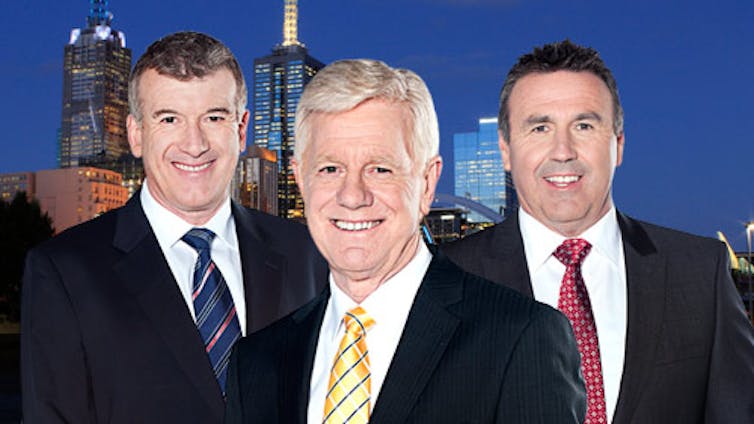TV presenters, sexism and the attractiveness double standard
TV presenters, sexism and the attractiveness double standard

Can you think of a female equivalent of political reporter Laurie Oakes on commercial television?
She would be aged over 60 (or 70 is Oakes’s case) with extensive knowledge of the area on which she reports. She would also not be conventionally attractive, likely with thinning hair and carrying excess weight. But she would keep her job because her intelligence and experience were trusted and respected by television viewers.
I’m assuming that you can’t answer this question because there is no equivalent to the older, trusted male television presenter when it comes to women. While dramas and sitcoms can reflect a more diverse range of women in terms of age, size, and even racial background, the female hosts and reporters of commercial television’s news and morning programmes, all largely fit a narrow mould of young, white, and thin.
The bias toward young female television presenters is not confined to Australia. A recent study of major broadcasters in the UK found that of all presenters aged over 50, only 18%t of these were women. Yet 39% of presenters overall were women, indicating that there is a firm “use-by” date for women that does not apply to men.
The use-by date applies because ageing women often cannot maintain the standard of youthful attractiveness demanded of them, but not their male colleagues. If nobody wants to see “old people” on television, why aren’t grey-haired male presenters also replaced when their jowls start sagging?

Last year journalist Tracey Spicer wrote about her treatment after the birth of her first child. Spicer was allegedly told that she was “getting a bit long in the tooth” and that she might want to make way for “some of the younger girls”. After the birth of her second child, Spicer was fired at the age of thirty-nine, though her employer, Channel 10, denied age or sex discrimination
In her Andrew Olle lecture, given just over a week ago, co-host of Channel Nine’s Today, Lisa Wilkinson, pointed out that the age of female journalists is usually mentioned immediately in media profiles “as if it is a measure of her sexual currency and just how long it will be before it expires”.
Her comments on the inordinate attention given to the dress of female presenters have also proven timely. Wilkinson remarked that as a woman on breakfast television “you quickly learn the sad truth that what you wear can sometimes generate a bigger reaction than any political interview you ever do”.
Just a few days after Wilkinson’s lecture, political journalist Annabel Crabb wrote about the laborious hair styling and make-up required for women to appear on television unless they wish to attract “howls, boos and vicious letters from members of the viewing audience”. Yet too much make-up can also elicit similar responses. Crabb mentions a recent email from an ABC viewer who disliked her make-up enough to liken her to a “two-bit hooker ready for a bit of business”.

We can acknowledge the sexism of television game show hostesses of the past, who were only allowed to silently smile and wave their hands around coveted prizes, while the male host did all of the talking. Yet the remains of this kind of sexism, in which women’s role relies on their conventional beauty, are still with us.
Advertisements for commercial news bulletins repeatedly use words like “experience” and “trust”. The camera usually focuses in on a male newsreader who has had a long career in the industry, such as Ten’s Mal Walden who is soon due to retire after a forty-year television career. Age is an asset for these male newsreaders, who acquire authority with the passing of years and the acquisition of more wrinkles.
On SBS, newsreader Lee Lin Chin, whose career began in the late 1960s in Singapore, is a rare exception. She is a woman over 50 who is valued for her experience and knowledge. However, the ratings-driven networks do not seem willing to allow women to enjoy long careers that are similarly based on their expertise, rather than physical appearance.
Some people will suggest that television is a visual medium and that men are also often selected for presenting roles based on their appearance. Indeed, television, like film, is not a representation of reality and there is no particular reason why, as with models, a particular subset of “attractive” people should not be hired.
What differs with TV presenters is that men regularly do not conform to what is considered attractive in terms of youth and weight, but are valued for their intelligence and an aura of reliability. This is not to say that the young women who are working in television are not equally capable or skilled, but rather to condemn the fact that they’ll never be afforded as many years in which to develop — and to earn a living — as their male colleagues.![]()
Michelle Smith, ARC Postdoctoral Fellow, Deakin University
This article is republished from The Conversation under a Creative Commons license. Read the original article.
Không có nhận xét nào: